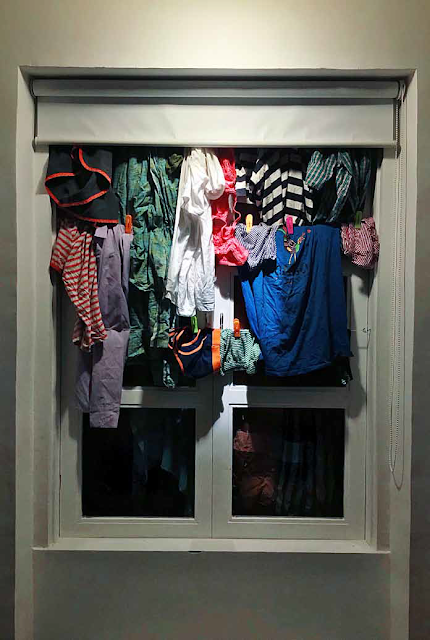About the Exhibition
The team
at TARQ is delighted to present Wandering
Violin Mantis– Nibha Sikander’s first solo exhibition. In this exhibition, Sikander
expands on her growing practice of looking at and recreating various species
from nature, some real and some imagined. The artist uses layer upon layer of
intricately cut out paper to create form after form of moths, mantises and
birds, each one meticulously assembled in her studio in Murud-Janjira.
This
exhibition focuses on Sikander’s observations of a variety of insects and other
creatures that surround her. Fascinated by nature since childhood, and more
particularly since moving to her current home, the artist began experimenting
with making birds in her medium of choice – paper. The paper, according to her,
mimics nature in its versatility – soft, stiff, malleable and flexible, almost
like wings, feathers and antennae. In some of her works, Sikander delves deeper
into her engagement with her subjects, deconstructing, and even abstracting the
individual elements of the bird or insect that she is recording.
In his
catalogue essay, Ranjit Hoskote says of Nibha’s work “Wrought with unerring
accuracy, and with a heightened attentiveness to delicate and often elusive
detail, Sikander’s moths and birds testify to the dazzling enchantment of the
natural world as well as to the magic of taxonomical science. Presented in
segments, as a row of disjecta membra laid out from wing to beak and head, her
birds make a graphic transition from field guide to portrait gallery. They come
across, not primarily as representatives of a species, but as sharply
individual denizens of a world menaced by predators, surly winds, changing
weather patterns.”
About the Artist
Nibha Sikander (b.1983) has done
her Bachelors in Visual Arts (2006) and Masters in Visual Arts (2008), both
specialising in painting, from the Maharaja Sayajirao University, Vadodara.
Since her graduation, she has been part of several group exhibitions, some of
which include ALCHEMY: Explorations in Indigo, KasturbhaiLalbhai Museum,
Ahmedabad (2019); Beyond Borders, curated by the CONA Foundation at the
Whitworth Gallery/Museum, Manchester, England (2017-18); A New Space,
Nazar Art Gallery, Vadodara (2016); Back to College, VADFEST, Faculty of
Fine Arts, Vadodara (2015); A Construal of Mourning and Rage, Emami
Chisel Art, Kolkata (2014); Group show at Studio X, as part of the
Paradise Lodge International Artist Residency, Mumbai (2013); Beauty and the
Beast, Matthieu Foss Gallery, curated by Anne Maniglier, Mumbai, (2011); Show
Girls!, Strand Art Room Gallery, curated by Anne Maniglier, Mumbai (2009); From
our Cabinets to the Museum, Open Eyed Dreams Gallery, curated by Aparna
Roy, Kochi (2009); and Class of 2008, Art Konsult Gallery, curated by
Bhavna Khakkar, New Delhi, (2008-09)
She has taken part in residencies
like Paradise Lodge International Artist Residency, Lonavala, Mumbai (November
2013); Sandarbh International Artists Residency Programme, Jaipur (November
2012); and Residency at the American School of Bombay, Mumbai (March - May
2010)
She is the recipient of the
Nasreen Mohamedi Scholarship, Maharaja Sayajirao University, Vadodara,
2004-2005. Nibha currently works and lives in Murud-Janjira and Mumbai
Preview: Thursday, 28th November 2019 | 6:30 pm – 9:30 pm
11:00 am – 6:30 pm | Tuesday – Saturday | Closed on Public Holidays
For Images and Further Enquiries Contact Vanessa Vaz: press@tarq.in or +91 22 6615 0424
Address: F35/36 Dhanraj Mahal, C.S.M. Marg, Apollo Bunder, Colaba, Mumbai, Maharashtra 400001
Hours:
Open ⋅ Closes 6:30PM
Phone: 022 6615 0424


































